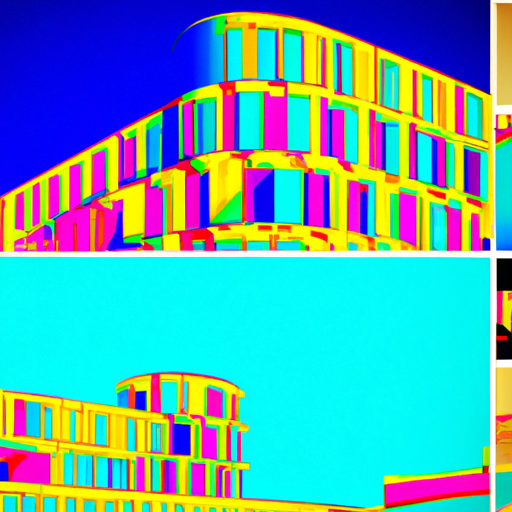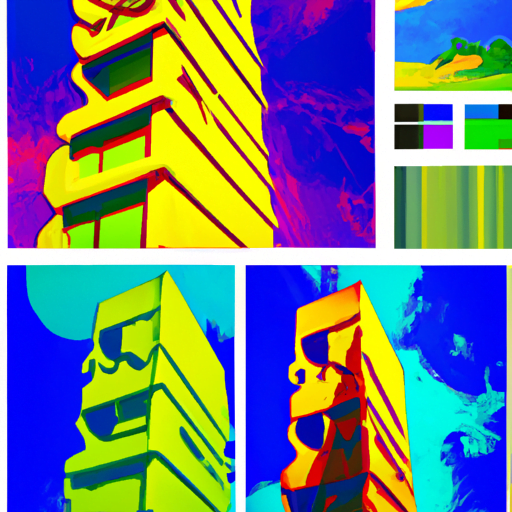
-
Table of Contents
- AI-Generated Architecture Concepts: Redefining Urban Design
- The Rise of AI in Architecture
- Benefits of AI-Generated Architecture Concepts
- Case Studies: AI in Urban Design
- 1. The Google Sidewalk Labs Project
- 2. The Future of Singapore’s Urban Planning
- Challenges and Limitations
- The Future of AI in Urban Design
- Summary
AI-Generated Architecture Concepts: Redefining Urban Design

Artificial Intelligence (AI) has revolutionized various industries, and now it is making its mark on urban design and architecture. With the ability to generate innovative and creative concepts, AI is redefining the way architects and urban planners approach the design of cities. This article explores the impact of AI-generated architecture concepts on urban design, highlighting the benefits, challenges, and potential future developments in this field.
The Rise of AI in Architecture
AI has become an integral part of our lives, from voice assistants like Siri and Alexa to self-driving cars. Its application in architecture and urban design is a natural progression, as it offers new possibilities and solutions to complex design challenges.
One of the key areas where AI is making a significant impact is in the generation of architecture concepts. AI algorithms can analyze vast amounts of data, including historical architectural styles, urban planning principles, and environmental factors, to generate unique and innovative design ideas.
Benefits of AI-Generated Architecture Concepts
The use of AI in generating architecture concepts brings several benefits to the field of urban design:
- Efficiency: AI algorithms can quickly generate multiple design options, saving architects and urban planners valuable time and effort. This allows for more iterations and exploration of design possibilities.
- Creativity: AI algorithms can think outside the box and come up with unconventional design ideas that may not have been considered by human designers. This opens up new avenues for creativity and innovation in urban design.
- Optimization: AI algorithms can optimize designs based on various factors such as energy efficiency, sustainability, and user experience. This leads to more efficient and sustainable urban environments.
- Adaptability: AI-generated architecture concepts can adapt to changing needs and requirements. For example, if there is a sudden increase in population density, AI algorithms can quickly generate design solutions to accommodate the growing demand.
Case Studies: AI in Urban Design
Several notable case studies demonstrate the successful application of AI-generated architecture concepts in urban design:
1. The Google Sidewalk Labs Project
Google’s Sidewalk Labs project aims to create a smart city neighborhood in Toronto, Canada. AI plays a crucial role in designing the neighborhood, with algorithms generating various concepts for buildings, transportation systems, and public spaces. The AI-generated designs prioritize sustainability, walkability, and accessibility, creating a model for future urban developments.
2. The Future of Singapore’s Urban Planning
Singapore is known for its innovative urban planning strategies, and AI is now being integrated into the process. The Urban Redevelopment Authority of Singapore is using AI algorithms to generate design options for new developments. These designs take into account factors such as population density, transportation networks, and environmental sustainability, resulting in more efficient and livable urban spaces.
Challenges and Limitations
While AI-generated architecture concepts offer numerous benefits, there are also challenges and limitations that need to be addressed:
- Human Input: AI algorithms are only as good as the data they are trained on. It is essential for human designers to provide input and guidance to ensure that the generated concepts align with the desired goals and aesthetics.
- Ethical Considerations: AI-generated designs may raise ethical concerns, such as the displacement of communities or the lack of human touch in the design process. It is crucial to strike a balance between AI-generated concepts and human-centered design principles.
- Technical Limitations: AI algorithms may struggle with certain design constraints or complex urban contexts. They may not fully capture the cultural, historical, and social aspects that shape urban environments.
The Future of AI in Urban Design
The potential of AI in urban design is vast, and there are several exciting developments on the horizon:
- Generative Adversarial Networks (GANs): GANs are AI algorithms that can generate new designs by learning from existing ones. This technology has the potential to create even more realistic and contextually appropriate architecture concepts.
- Virtual Reality (VR) Integration: VR can be combined with AI-generated architecture concepts to create immersive experiences for urban planners, architects, and the general public. This allows stakeholders to visualize and experience the proposed designs before they are implemented.
- Collaborative Design: AI can facilitate collaboration between architects, urban planners, and other stakeholders by generating design options that incorporate their input and preferences. This leads to more inclusive and participatory urban design processes.
Summary
AI-generated architecture concepts are redefining urban design by offering efficiency, creativity, optimization, and adaptability. Case studies such as the Google Sidewalk Labs project and Singapore’s urban planning initiatives demonstrate the successful application of AI in creating sustainable and livable urban environments. However, challenges such as the need for human input, ethical considerations, and technical limitations must be addressed. The future of AI in urban design holds promise with developments like GANs, VR integration, and collaborative design. As AI continues to evolve, it will play an increasingly significant role in shaping the cities of tomorrow.
